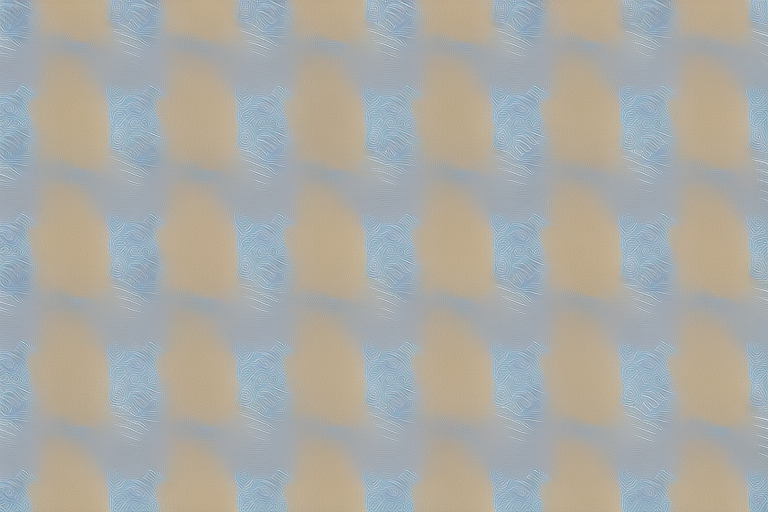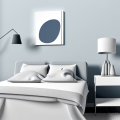Throw pillows are one of the most versatile decorative elements in any home, and adding texture to them can really take your home decor to the next level. In this article, we will explore the various benefits and types of textured throw pillows, as well as how to coordinate them with other decorative elements, display them in different spaces, maintain their longevity, and even make your own unique throw pillows.
Why Textured Throw Pillows Are a Must-Have for Your Home Decor
Texture is what makes our surroundings more interesting and engaging. It adds depth and dimension to any space, and it has the power to evoke emotions and create ambience. When it comes to throw pillows, texture not only adds visual interest, but also tactile comfort. With textures like faux fur, shag, boucle, or embroidery, you can create a cozy and inviting atmosphere in any room of your home.
Moreover, textured throw pillows can also serve as a focal point in your home decor. They can be used to break up a monochromatic color scheme or add contrast to a neutral palette. You can mix and match different textures and patterns to create a unique and personalized look that reflects your style and personality. Additionally, textured throw pillows are versatile and can be used in different settings, from a formal living room to a casual family room or bedroom. They are an affordable and easy way to update your home decor and add a touch of luxury and comfort.
Different Types of Textured Throw Pillows to Choose From
When shopping for textured throw pillows, you’ll have plenty of options to choose from. Some of the most popular textures include faux fur, velvet, wool, knit, woven, applique, and sequin. Each texture has its own unique look and feel, and can create a different mood in your home. For example, faux fur pillows are great for adding warmth and softness to a rustic or bohemian interior, while velvet pillows can add sophistication and elegance to a modern or transitional space.
Another popular texture for throw pillows is embroidery. Embroidered pillows can add a touch of whimsy or personality to a room, with designs ranging from simple monograms to intricate patterns. They can also be a great way to incorporate a pop of color or a specific theme into your decor. Additionally, leather and suede pillows can add a luxurious and masculine touch to a space, while linen and cotton pillows can create a more casual and relaxed atmosphere. When choosing textured throw pillows, consider the overall style and mood of your room, as well as the colors and patterns already present, to ensure a cohesive and visually appealing look.
How to Coordinate Colors and Patterns of Textured Throw Pillows
One of the most challenging aspects of decorating with textured throw pillows is coordinating the colors and patterns. To achieve a cohesive look, start by picking one dominant color or pattern from your existing decor, and then choose textured pillows that complement it. For example, if your sofa has solid beige cushions, you can add textured throw pillows in shades of brown, cream, or white, or even a subtle pattern like stripes or dots. Alternatively, you can mix and match textures and patterns for a more eclectic and playful look. Just be sure to balance them out with solid-colored pillows in neutral tones.
Another important factor to consider when coordinating colors and patterns of textured throw pillows is the size and shape of the pillows. If you have a large sofa, you may want to opt for larger pillows to create a more dramatic effect. On the other hand, if you have a smaller sofa or chair, smaller pillows may be more appropriate. Additionally, consider the shape of the pillows. Square pillows are a classic choice, but you can also mix in rectangular or round pillows for added interest.
Finally, don’t be afraid to experiment with different textures beyond just the pillows themselves. You can add texture to your space with a cozy throw blanket draped over the back of the sofa or a plush rug on the floor. These additional textures can help tie together the look of your space and create a warm and inviting atmosphere.
Affordable Ways to Incorporate Textured Throw Pillows in Your Home
If you’re on a tight budget, there are still plenty of ways to add textured throw pillows to your home without breaking the bank. Look for sales, clearance items, or even thrift stores for affordable options. You can also repurpose old sweaters, scarves, or fabrics to make your own textured pillow covers. Another option is to choose pillow inserts that can be easily swapped out with different covers, so you can change up your decor with the seasons or occasions.
Additionally, consider mixing and matching different textures and patterns to create a unique and visually interesting display of throw pillows. Don’t be afraid to experiment with different colors and materials, such as faux fur, velvet, or woven fabrics. You can also use throw pillows to add pops of color to a neutral room or to tie together different elements of your decor. With a little creativity and resourcefulness, incorporating textured throw pillows into your home can be an affordable and fun way to update your space.
How to Mix and Match Textured Throw Pillows with Other Decorative Elements
Textured throw pillows are just one of the many decorative elements in your home, and they need to complement other elements in order to create a harmonious look. Some important factors to consider are the colors, patterns, textures, and scale of your furniture, curtains, rugs, wall art, and accent pieces. When mixing and matching different textures, try to balance out the overall visual weight of each element, and use a consistent color scheme to tie everything together.
Another important factor to consider when mixing and matching textured throw pillows with other decorative elements is the style of your home. If you have a modern or minimalist style, you may want to stick to solid-colored pillows with subtle textures, while a bohemian or eclectic style may call for more bold and colorful patterns. Additionally, consider the function of the room and the mood you want to create. Soft, plush pillows may be perfect for a cozy living room, while more structured pillows may work better in a formal dining room. By taking all of these factors into account, you can create a cohesive and stylish look with your textured throw pillows and other decorative elements.
Best Places to Display Textured Throw Pillows in Your Living Space
Textured throw pillows can be displayed in various places in your living space, depending on your personal style and preferences. Some popular choices include the sofa, the armchair, the bed, the window seat, or the floor. When deciding on the placement, consider the function of each area, and choose pillow sizes and shapes accordingly. For example, larger floor pillows work well in a cozy reading corner, while smaller lumbar pillows can add support and comfort to your desk chair.
If you have a neutral color scheme in your living space, textured throw pillows can add a pop of color and interest. Consider choosing pillows with bold patterns or bright colors to liven up the room. Alternatively, if you have a bold color scheme, textured pillows in neutral tones can provide a calming balance.
Don’t be afraid to mix and match textures and patterns when displaying throw pillows. A combination of velvet, fur, and woven textures can create a cozy and inviting atmosphere. Additionally, layering pillows of different sizes and shapes can add depth and dimension to your living space.
How to Clean and Maintain Textured Throw Pillows for Longevity
Like any decorative element, textured throw pillows need to be cleaned and maintained regularly in order to preserve their longevity and quality. Depending on the texture and material, you may need to follow specific cleaning instructions, such as dry cleaning, spot cleaning, or hand washing. Always read the care labels carefully, and avoid using harsh chemicals or high heat when drying or ironing. To maintain their shape and fluffiness, you can also rotate and fluff the pillows regularly, or use a vacuum with a brush attachment to remove any dust or dirt.
Another important aspect of maintaining textured throw pillows is to protect them from direct sunlight and moisture. Exposure to sunlight can cause fading and discoloration, while moisture can lead to mold and mildew growth. To prevent these issues, consider using a pillow cover or storing the pillows in a dry, cool place when not in use.
If you have pets or children, it’s also important to address any spills or stains on the pillows as soon as possible. Blot the area with a clean cloth or paper towel, and avoid rubbing or scrubbing, which can damage the texture. You can also use a mild detergent or stain remover, but test it on a small, inconspicuous area first to ensure it doesn’t cause any damage.
DIY Ideas for Making Your Own Unique Textured Throw Pillows
If you want to add a personal touch to your home decor, making your own textured throw pillows can be a fun and rewarding DIY project. Some simple ideas include sewing faux fur, leather, or denim scraps onto plain pillow covers, knitting or crocheting your own pillow covers with yarn or t-shirt strips, or stenciling or painting patterns onto canvas pillow covers. The possibilities are endless, and you can customize the textures, colors, and patterns to match your personal style.
Another idea for creating unique textured throw pillows is to use different types of fabric manipulation techniques. For example, you can try smocking, pleating, or ruching fabric to create interesting textures and patterns. You can also experiment with different types of fabrics, such as velvet, silk, or linen, to add depth and dimension to your pillows. Don’t be afraid to mix and match different techniques and fabrics to create a truly one-of-a-kind pillow that reflects your personal style and creativity.
The Psychology of Texture: Why We Crave It in Our Home Decor
Texture is not only visually appealing, but also emotionally satisfying. According to psychologists, humans are wired to seek out tactile experiences that stimulate our senses and provide comfort and security. Texture can also create a sense of intimacy, coziness, or playfulness in our living spaces, depending on the type and placement of the textured elements. By adding textured throw pillows to your home, you are not only enhancing its aesthetic appeal, but also promoting your own well-being and happiness.
Furthermore, texture can also serve as a way to express our personalities and individuality. By incorporating unique textures into our home decor, we can showcase our personal style and create a space that feels truly our own. This can be achieved through the use of natural materials such as wood or stone, or through more unconventional textures like shaggy rugs or metallic accents.
Finally, texture can also have practical benefits in our homes. Textured surfaces can provide better grip and prevent slips and falls, making them a great choice for high-traffic areas like bathrooms and kitchens. Additionally, textured fabrics like wool or fleece can provide insulation and keep us warm during colder months, reducing our reliance on heating systems and saving energy.
From Bohemian to Modern: Styling Tips for Any Home Aesthetic with Textured Throw Pillows
Whether you’re going for a bohemian, modern, traditional, or eclectic home aesthetic, textured throw pillows can be adapted to suit your style. For a bohemian look, choose pillows with natural fabrics and earthy tones, or mix and match different textures and patterns with colorful tassels or fringe. For a modern or minimalist look, go for solid-colored geometric or abstract textured pillows in neutral shades, or contrast them with metallic accents. For a traditional or classic look, opt for plush or embroidered pillows in rich colors or intricate patterns, or pair them with paisley or floral prints. The possibilities are endless, and with a bit of creativity, you can create a truly unique and personalized home decor style with textured throw pillows.





